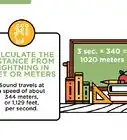This article was co-authored by Bess Ruff, MA. Bess Ruff is a Geography PhD student at Florida State University. She received her MA in Environmental Science and Management from the University of California, Santa Barbara in 2016. She has conducted survey work for marine spatial planning projects in the Caribbean and provided research support as a graduate fellow for the Sustainable Fisheries Group.
This article has been viewed 922,061 times.
Knowing how to read a weather map can help you understand the weather and know what to expect. For example, high pressure (H) areas will have clear skies, while low pressure (L) areas can be stormy. Blue "cold front" lines bring rain and wind in the direction the triangular marks point. Red "warm front" lines bring brief rain followed by warming in the direction of the semi-circles. If you'd like to learn more about reading weather maps, keep on reading!
Steps
Learning the Basics of Weather Maps
-
1Understand general concepts of precipitation. What most people are concerned with is precipitation, which, in meteorology (the study of weather), is any form of water that falls onto the Earth's surface. Forms of precipitation include rain, hail, snow, and sleet.
-
2Recognize what a high pressure system is. A major aspect of weather interpretation involves being able to understand the actions caused by differences in air pressure. High pressure implies dry weather. A high pressure system is an air mass that contains denser air because its air is cooler and/or dryer than the surrounding air. Thus, its heavier air falls downward and away from the pressure system's center, like water being poured onto the ground.[1]
- With high pressure systems, the weather will tend to become clear or clearing.
Advertisement -
3Understand what a low pressure system is. Low pressure is usually associated with humid air and in some cases, precipitation. A low pressure system is an air mass that has less dense air because its air is moister and/or warmer. Surrounding air draws inward toward the low system's center as the lighter air balloons upward, often causing clouds or precipitation because that moist air cools as it rises.[2]
- You see this effect when air's invisible water vapor is forced to condense into droplets when it contacts the outside of a cold glass). But droplets won't form if the glass is only slightly cool ...thus, rising low pressure air will only produce rain if it gets up where the air is cool enough to condense the water vapor into droplets too heavy to be kept aloft by the rising air. (Clouds are simply water droplets that are small enough to be kept aloft).
- With very low pressure systems, storms are on the way (if they aren't there already). Clouds begin to form and move across the sky -thunderhead clouds forming when moist air is thrust very high. Sometimes tornadoes form when very high pressure air collides with very warm, moist low pressure air.
-
4Study a weather map. Watch out for one on the TV news, online, or in your local newspaper. (Other sources may include magazines and books, but they may not be current.) Newspapers are a convenient method to find a weather map as they are cheap, reliable, and can be cut apart so you can carry them with you while learning to interpret the symbols.
-
5Analyze a small portion of your weather map. If possible, find a map covering a smaller area – these can be easier to interpret. Focusing on a larger scale may be difficult for a beginner. On the map, notice the location, lines, arrows, patterns, colors, and numbers. Every sign counts and all are different.
Reading the Air Pressure
-
1Understand what air pressure measures. This is the weight or pressure the air exerts on the ground and is measured in millibars. It is important to be able to read air pressure because pressure systems are associated with certain weather patterns.[3]
- The average air pressure system measures 1013 mb (29.92 inches of mercury).
- A typical strong high pressure system measures around 1030 mb (30.42 inches of mercury).
- A typical low pressure system measures around 1000 mb (29.54 inches of mercury.
-
2Learn the air pressure symbols. To read air pressure on a surface analysis weather map, check for isobars (iso = equal, bar = pressure) – plain, curved lines that indicate areas of equal air pressure. Isobars play a major role in determining the speed and direction of wind.
- When the isobars form concentric closed (but not always round) circles, the smallest circle in the center indicates a pressure center. This can be either a high-pressure system (depicted by an "H" in English, "A" in Spanish) or a low pressure system (depicted by an "L" in English, "B" in Spanish).[4]
- Air does not flow "down" pressure gradients; it flows "around" them due to the Coriolis effect (Earth spinning). Hence, wind direction is indicated by the isobars, counterclockwise around lows (cyclonic flow) and clockwise around highs (anticyclonic) in the northern hemisphere, thus creating wind. The closer the isobars are to one another, the stronger the winds.
-
3Learn how to interpret a Low Pressure System (Cyclone). These storms are characterized by increased cloudiness, winds, temperatures, and chance of precipitation. They are represented on a weather map by isobars that are close together with arrows traveling clockwise (Southern Hemisphere) or counter-clockwise (Northern Hemisphere), usually with a "T" in the middle isobar, which forms a round circle (the letter can vary, however, depending on the language the weather report is presented in).
- Radar imagery can show low-pressure systems. Tropical cyclones (South Pacific) are also named hurricanes around America or typhoons in coastal Asia.
-
4Learn how to interpret a High Pressure System. These conditions indicate clear, calm weather with reduced chance of precipitation. Drier air usually results in a greater range of high and low temperatures.[5]
- They are represented on a weather map as isobars with an "H" in the middle isobar and arrows showing which direction the wind is flowing (clockwise in Northern Hemisphere, counterclockwise in the Southern Hemisphere). Like cyclones, they can also be shown with radar imagery.
Interpreting the Types of Fronts
-
1Observe the types and movement of fronts. These mark the boundary between warmer air on one side and colder air on the other. If you are close to a front and you know the front is moving towards you, you can expect a change in weather (e.g. cloud formation, precipitation, thunderstorms, and wind) when the front boundary passes over you. Mountains and large bodies of water can distort its path.[6]
- On a weather map, you will notice some lines that have semi-circles or triangles on either side, or both. These indicate the boundaries for various types of fronts.
-
2Analyze a Cold front. With these weather patterns, rainfall can be torrential and wind speeds can be high. Blue lines with triangles on one side represents cold fronts on weather maps. The direction the triangles point is the direction in which the cold front is moving.[7]
-
3Analyze a Warm front. These often bring a gradual increase in rainfall as the front approaches, followed by prompt clearing and warming after the front passes. If the warm air mass is unstable, the weather might be characterized by prolonged thunderstorms.
- A red line with semi-circles on one side represents warm fronts. The side the semi-circles are on represent the direction in which the warm front is heading.
-
4Study an Occluded front. These are formed when a cold front overtakes a warm front. They are associated with various weather events (possibly thunderstorms) depending on whether it is a warm or cold occlusion. The passing of an occluded front usually brings drier air (lowered dew point).[8]
- A purple line with semi-circles and triangles both on the same side represents occluded fronts. Whichever side they're on is the direction the occluded front is going.
-
5Analyze a Stationary front. These indicate a non-moving boundary between two different air masses. These fronts have long continuous rainy periods that linger for extended periods in one area and move in waves. A semi-circle bordering one side and triangles along the opposite side represents that the front is not moving in any direction.
Interpreting Other Weather Map Symbols
-
1Read the station models at each point of observation. If your weather map has station models, each one will plot the temperature, dew-point, wind, sea level pressure, pressure tendency, and ongoing weather with a series of symbols.[9]
- Temperature is generally recorded in Celsius degrees and rainfall is recorded in millimeters. In the US, temperatures are in Fahrenheit and rainfall is measured in inches.
- Cloud cover is indicated by the circle in the middle; the extent to which it is filled indicates the degree to which the sky is overcast.
-
2Study the lines on the weather map. There are many other lines on weather maps. Two of the most important kinds of lines indicate isotherms and isotachs.
- Isotherms – These are lines on a weather map that connect points through which the isotherm passes have the same temperature.
- Isotachs – These are lines on a weather map that connect points where the isotach passes have the same wind speed.
-
3Analyze the pressure gradient. A number on the isobars, such as "1008", is the pressure (in millibars) along that line. The distance between isobars is referred to as the pressure gradient. A large change in pressure over a short distance (i.e. close isobars) indicates strong winds.
-
4Analyze wind strength. Wind barbs point in the direction of the wind. Lines or triangles coming off the main line at an angle indicate wind strength: 50 knots for every triangle, 10 knots for every full line, 5 knots for every half line.[10]
Community Q&A
-
QuestionWhat do the white lines mean on the weather map?
 Community AnswerThe white lines indicate isobars. The closer together they are, the stronger the wind will be.
Community AnswerThe white lines indicate isobars. The closer together they are, the stronger the wind will be. -
QuestionWhat point do weather forecasts use for wind direction?
 Community AnswerWind direction is indicated by the direction from which it originates. For example, a southerly wind blows from the south to the north.
Community AnswerWind direction is indicated by the direction from which it originates. For example, a southerly wind blows from the south to the north. -
QuestionWhat do the lines making a circle around the low pressure area indicate?
 Community AnswerThis means that every location on that line is at the same pressure (isobar). These lines are closer together and range in pressure, indicating a higher wind in that region. The wind would be going into the low pressure areas and coming out from the high pressure ones.
Community AnswerThis means that every location on that line is at the same pressure (isobar). These lines are closer together and range in pressure, indicating a higher wind in that region. The wind would be going into the low pressure areas and coming out from the high pressure ones.
References
- ↑ https://www.bbc.co.uk/bitesize/articles/z89h7yc
- ↑ https://www.bbc.co.uk/bitesize/articles/z89h7yc
- ↑ https://media.bom.gov.au/social/blog/2391/the-art-of-the-chart-how-to-read-a-weather-map/
- ↑ https://scijinks.gov/weather-map/
- ↑ https://www.metoffice.gov.uk/weather/maps-and-charts/surface-pressure/#?tab=surfacePressureColour&fcTime=1461798000
- ↑ https://media.bom.gov.au/social/blog/2391/the-art-of-the-chart-how-to-read-a-weather-map/
- ↑ http://www.wpc.ncep.noaa.gov/html/fntcodes2.shtml
- ↑ http://www.wpc.ncep.noaa.gov/html/fntcodes2.shtml
- ↑ https://media.bom.gov.au/social/blog/2391/the-art-of-the-chart-how-to-read-a-weather-map/
About This Article
To read a weather map, understand that a line with all triangles symbolizes a cold front, which will bring humidity and possibly rain. A line with all circles signifies a warm front and the dry, cool air that comes with it. In addition, a line with circles and triangles on the same side shows an occluded front, where a cold front overtakes a warm front to cause a variety of events, including thunderstorms. Keep reading for advice from our Environmental reviewer on how to identify a stationary front and the weather it brings!
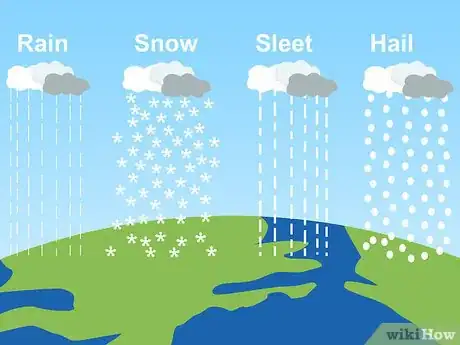
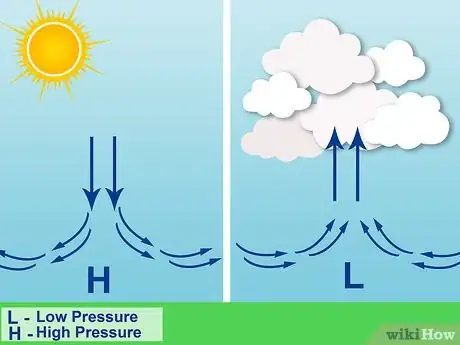



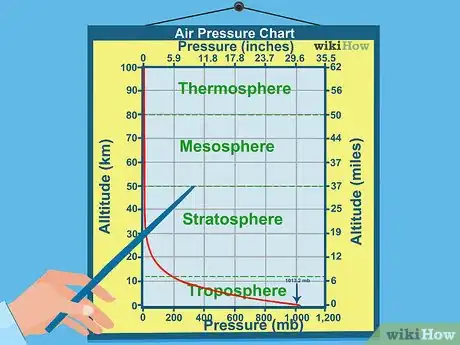



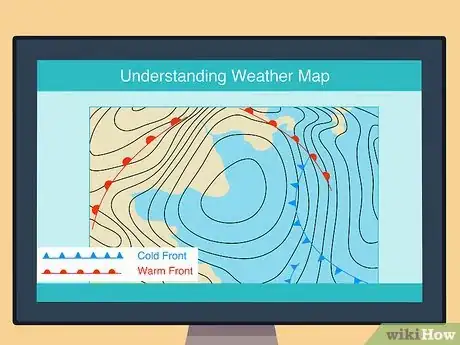




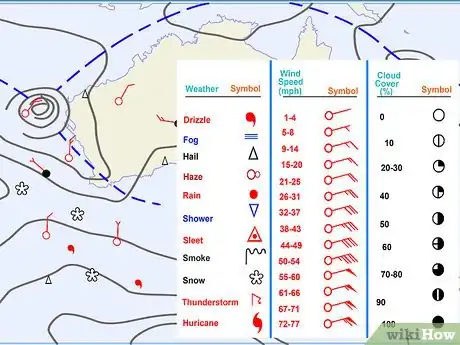
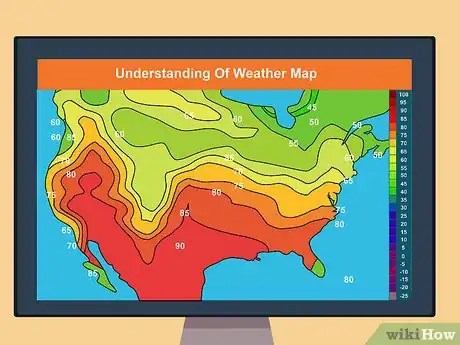



-Step-15.webp)
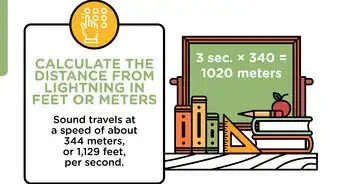



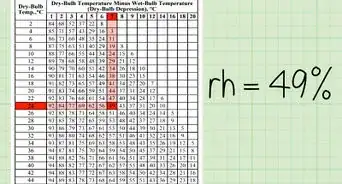




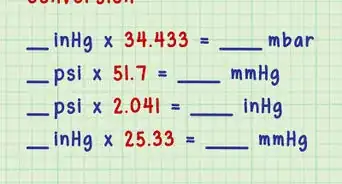











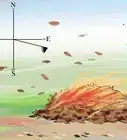

-Step-15.webp)
